The ongoing coronavirus pandemic is impacting every part of our lives, from the places we can go to the way we spend our time, to the priorities we have and the way we spend our money.Of course, this has wide-ranging ramifications for marketing and advertising – as well as a number of other sectors like travel, entertainment and FMCG.
Understanding and predicting which new consumer behaviours will be temporary, and which will be permanent, will be the largest challenge for advertisers in the coming year. However, brands appear to be confident that social, search and video will be the biggest drivers of digital growth in the sector, despite the global outlook remaining uncertain in the first six months.There appears to be a consensus that digital advertising will grow at a faster rate than traditional forms of advertising. Cinema advertising is also set to make a steady comeback this year as some regions roll out vaccinations and lift restrictions in an attempt to help life return to normal. With the Olympics in Tokyo on track to take place after being delayed last year, sports advertising will likely see a boost, too.It also predicts India to be the leader of total ad spend growth across the globe, up by 26.9% year-on-year.
Pew Research’s Social Media Use in 2021 report, which surveyed has found that Facebook is still the most frequently-visited social media website, with 49% of adults who use the site indicating that they visit it several times per day.
Second in the ranking was Snapchat, which despite having a narrower demographic appeal than Facebook enjoys high engagement among its userbase, with 45% visiting it several times per day. Instagram ranked third, with 38% of its users making several visits per day. TikTok was not included in the ranking, despite being featured elsewhere in the report.
Also of note is the finding that among the social media sites included in Pew Research’s report since 2019, only YouTube and Reddit have achieved “statistically significant” growth in the percentage who use them. Facebook, Snapchat and Twitter’s growth among the respondents has been mostly level since 2019, while LinkedIn, Instagram, Pinterest and WhatsApp have seen relatively small increases.More influencer marketers now use TikTok than they do Facebook, according to a new report from Influencer Marketing Hub.
It is interesting that smaller and more commonly overlooked social platforms are making such gains in this area. Pinterest has attributed its fourth quarter success to ‘continued product innovation, execution and an earlier and longer holiday season’, while also reporting it had welcomed an additional 100 million monthly active users over the course of the calendar year.As the likes of Snapchat and Pinterest grow their user bases, even more advertisers are likely to flock to the platform to reach a wider demographic – spelling a positive future for the platforms.Sixteen percent of Millennials claimed that the platforms were making them feel anxious, the report found. However, those with this sentiment have been found to mostly use the platforms for ‘social reasons’ – as opposed to other activities like shopping – making them 19% more likely than others in their cohort to ensure they aren’t missing out on anything being posted.Despite the negative effects of these platforms, Millennials are surprisingly the most optimistic about social media’s role in society – on average, 38% say these platforms are ‘good for society’, rising to 45% in particularly heavy users.
Covid-19 has had a profound impact on the events business, eliminating crowded conferences and expos and forcing events organisers to adapt by shifting online. However, the outlook from the events industry is positive in the wake of this change.
